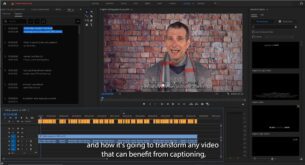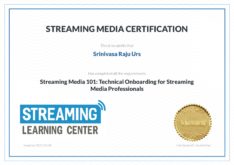MPEG LA’s recent announcement of a DASH royalty pool is the first such royalty on free internet video. And this is only the beginning.
We’ve all had time to reflect upon MPEG LA’s announcement of a DASH royalty pool. In my case, it led to the realization that this is the first royalty on free internet video and that things could get a whole lot worse.
Let’s start with a quick recap. The royalty is 5 cents per unit after the first 100,000 units of either a DASH Player or DASH Initiator. A DASH Player is any product “capable of parsing a Media Presentation Description and accessing or playing DASH Segments,” which should include browsers that can play DASH videos, like Edge, and off-the-shelf (OTS) players like DASH.js and JW Player. However, for at least the first year of the license, there’s an exclusion for players that load temporarily to play DASH video, which would exclude these OTS players. However, it seems highly likely that this category will be taxed once MPEG LA figures out how to administrate it.
Initiators are “products capable of initiating transfer of Media Presentation Descriptions [MPDs] associated with DASH Segments.” In plain English, these are apps on mobile devices, smart TVs, OTT devices, or game consoles that call an MPD for playback on another player. By definition, Initiators must be associated with DASH Segments distributed by the web service, or bear the brand name, which would exclude general-purpose browsers. There is no exclusion for apps that load temporarily to call the MPD, and then disappear.
Now that you have the background, let’s explore the implications. As far as I know, there never has been any kind of royalty on the use of free internet video. With H.264, there was the threat of this, though MPEG LA ultimately demurred, with MPEG LA CEO Larry Horn commenting, “The patent holders wanted to align the royalty obligation with the actual receipt of revenue, as we do with title by title or subscription licenses.” So H.264 gives rise to a royalty when used to encode video for pay-per-view and subscription, as does HEVC under the HEVC Advance Patent pool.
I asked Bill Geary, MPEG LA vice president of business development, whether there would be a similar demarcation for DASH. He responded, “The free/subscription dichotomy in H.264 is for content, and in DASH there are no content royalties, so the dichotomy would not apply. Right now the temporary players aren’t licensed. It is possible this will change in the future and if it does, we would not base the royalty on the type of DASH video viewed through the player.”
So, immediately, DASH videos distributed via apps by churches, schools, and charitable and governmental organizations are subject to the royalty. In 12 months, web videos distributed by the same organizations may also give rise to a royalty. Geary’s statement that “in DASH there are no content royalties” is a difference without a real distinction. If you distribute DASH-formatted video, you owe a royalty.
Another fear comes from my scanning the patents in the DASH pool. Specifically, the AVerMedia patent, filed in 2006, is for “A system for processing multimedia data outputs [and] multiple digital data streams of different compressed ratios or types to adapt to multiple limitations of storage spaces and transmission bandwidths.” I am not a patent attorney, but if this applies to DASH, it would seem to apply to HLS, and other adaptive streaming technologies. I asked Geary if additional pools were coming, and he replied, “We frequently look at different possibilities for patent pools. I can tell you we don’t have any active pool work on the standards you mention, although such work is not precluded if we see a patent thicket and a market need for a solution.”
So one view of the DASH pool is a first step toward multiple pools over all ABR technologies. And the industry response to this pool, which has yet to meaningfully coalesce, may control how far MPEG LA, and the patent owners they represent, tries to pursue this strategy.
 Streaming Learning Center Where Streaming Professionals Learn to Excel
Streaming Learning Center Where Streaming Professionals Learn to Excel







